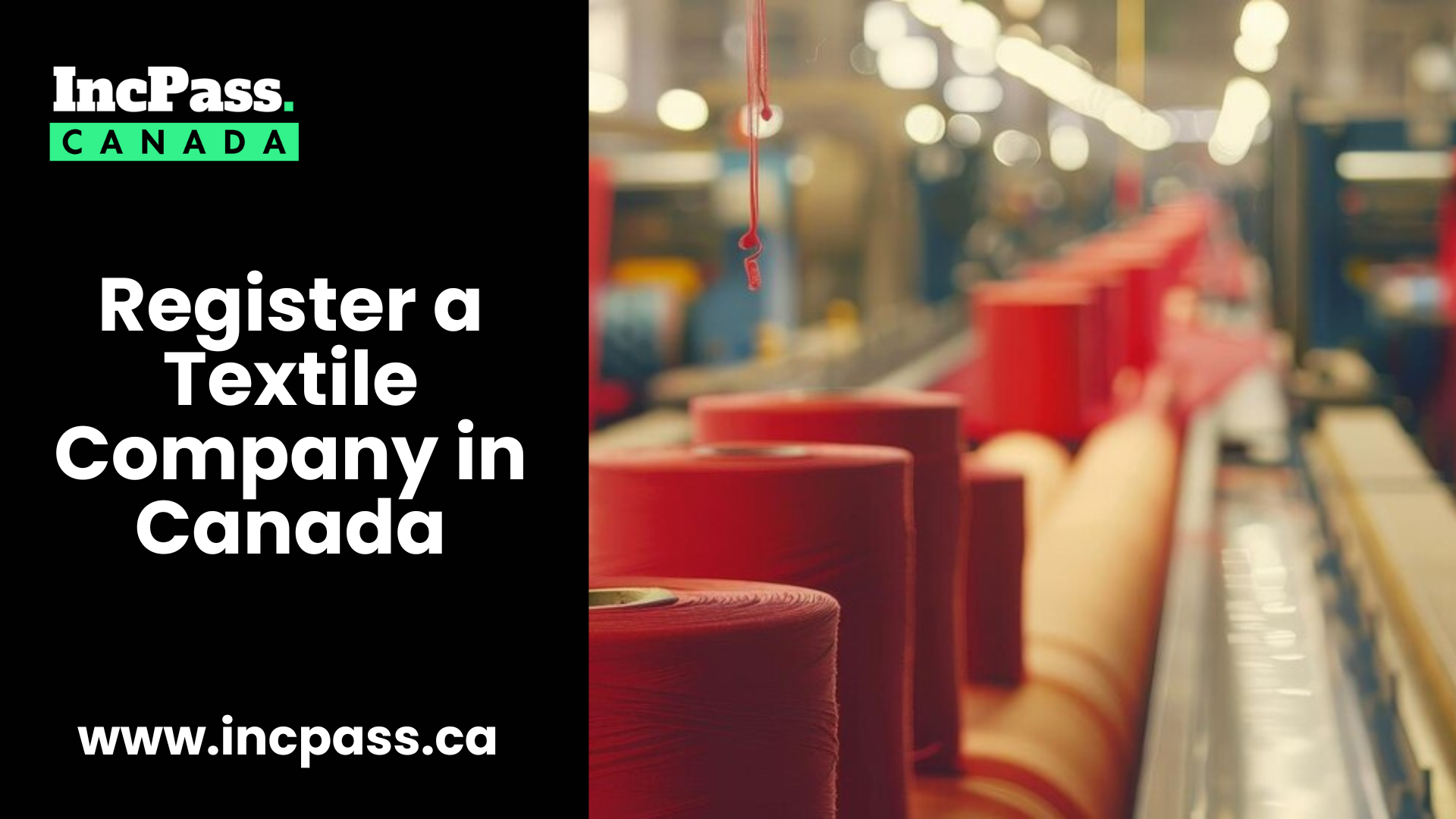Introduction
To register a textile company in Canada, you must go through a series of legal and administrative formalities to guarantee that your business is in compliance with local legislation. Whether you’re an experienced entrepreneur or a beginner to the sector, recognizing the key needs is critical for a successful start. Each stage in the registration procedure requires careful consideration, from choosing the suitable business structure to obtaining the essential licences. Furthermore, Canada’s different regional markets provide distinct prospects, emphasising the need of selecting a strategic location. By thoroughly planning and knowing the regulations, you can successfully establish a textile company in Canada, positioning your company for success in this dynamic and competitive industry.
Understanding Legal Requirements for Textile Business Registration in Canada
To register a textile company in Canada, you must comprehend both federal and provincial rules.
- Federal Incorporation: Register your business name with the Canadian government to ensure it fits legal requirements and is not already in use.
- Provincial Registration: Depending on where you operate, you may be required to obtain extra provincial registration, which may include local permissions and compliance with unique regional legislation.
- Licences and Permits: Obtain industry-specific licences, such as manufacturing or import/export permits, which are required to operate a textile firm.
- Industry Standards Compliance: Adhere to labour, environmental, and product safety regulations.
- GST/HST Registration:Ensure that your business is registered for Goods and Services Tax (GST) or Harmonized Sales Tax (HST), as applicable.
Read more about GST/HST in canada
Choosing the Right Business Structure for Your Canadian Textile Company
When you register a textile company in Canada, selecting the right business structure is crucial:
- Sole Proprietorship: Simple to establish and manage, giving the individual complete power, but with limitless personal liability for business obligations.
- Partnership: A relationship in which two or more people share ownership, obligations, and profits. It is simple to establish, but it also entails shared liability, which means partners are jointly liable for debts.
Incorporation reduces liability by segregating personal assets from business liabilities. It offers tax breaks and faster access to funds, but it is more difficult and costly to set up and run.
- Tax Implications: Each structure has various tax obligations, so think about how each option fits into your long-term business goals.
Navigating Taxation and Financial Obligations for Canadian Textile Entrepreneurs
When registering a textile company in Canada, understanding taxation and financial duties is vital.
- Income Tax: Your business structure (sole proprietorship, partnership, or incorporation) impacts how income is taxed. Incorporation frequently has tax advantages.
- GST/HST Registration: If your yearly income exceeds $30,000, you must register for Goods and Services Tax (GST) or Harmonized Sales Tax (HST) and charge it on sales.
- Payroll Taxes: Employers must collect and remit income tax, Employment Insurance (EI), and Canada Pension Plan (CPP) contributions.
Effective financial planning, which includes budgeting, cash flow management, and tax preparation, ensures that your textile business is profitable and compliant.
- Bookkeeping: Keeping accurate records is essential for tax management and following legal requirements.
Click on the link to know more about bookkeeping service in canada
Selecting a Suitable Location for Your Textile Business in Canada
Consider provinces with strong textile industries, such as Quebec and Ontario, which provide trained workers, industry networks, and supportive infrastructure.
- Market Access: Choose a site that is easily accessible to your target market, whether it is in high-demand urban areas or in regions with specific textile demands.
- Proximity to Suppliers: Being close to raw material suppliers and manufacturers might help to cut transportation costs and increase production efficiency.
- Logistics and distribution: To expedite distribution, choose a location with excellent transportation linkages, such as road, rail, and port access.
- Local incentives: Some regions provide tax discounts, subsidies, or other benefits to new enterprises, which can help to lower initial expenses.
Sourcing and Supply Chain Management for Canadian Textile Companies
When registering a textile company in Canada, good sourcing and supply chain management are vital.
- Finding Reliable Suppliers: Conduct research and build partnerships with suppliers who provide consistent quality and affordable price. Consider both local and foreign alternatives.
Implement inventory management systems to monitor supply levels, decrease waste, and prevent overstocking. Efficient inventory control aids in cash flow management and meeting consumer demand.
- Quality Control: Implement stringent quality control procedures to verify that your textiles satisfy industry requirements. To ensure consistency and client satisfaction, regularly inspect materials and final goods.
- Supplier contracts: To avoid disruptions, negotiate unambiguous contracts with suppliers that outline terms, delivery schedules, and quality expectations.
Consider sustainable sourcing strategies to appeal to environmentally sensitive customers.
Conclusion
Registering a textile business in Canada is a comprehensive procedure that needs careful consideration of legal, financial, and operational considerations. You may lay a solid foundation for your firm by knowing federal and provincial legislation, selecting the best business structure, and dealing with taxation. Choosing a strategic location with market access and accessibility to suppliers increases your competitive advantage, while good procurement and supply chain management ensure quality and sustainability. With careful planning and attention to detail, you can successfully establish a textile company in Canada, putting yourself on the path to long-term success in a dynamic and developing industry.
FAQs
What is the first stage in setting up a textile firm in Canada?
Begin by deciding on a business name and structure, and then register it federally or provincially, depending on your operational needs.
Must I register for GST/HST?
Yes, if your yearly turnover reaches $30,000, you must register and apply GST/HST on customer purchases.
What permits are needed to run a textile business in Canada?
Depending on your operations, you may require industry-specific licences such as production permits, environmental approvals, and import/export licences.
Is it required for a Canadian textile company to be incorporated?
Incorporation is optional, although it provides benefits such as limited liability protection and potential tax advantages over sole proprietorships or partnerships.








